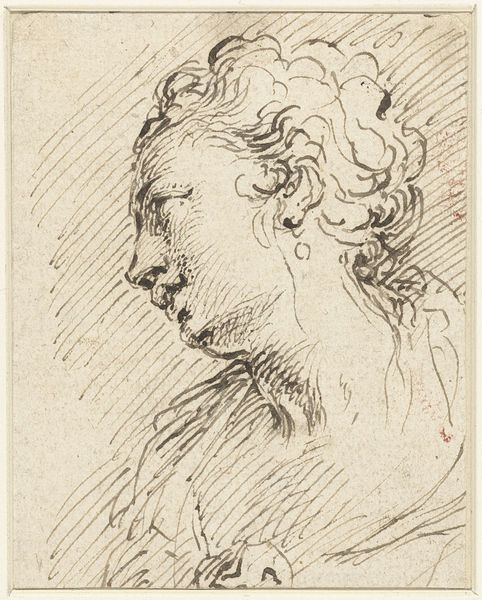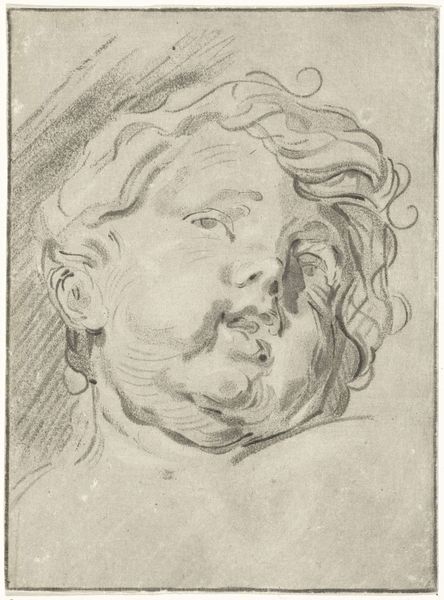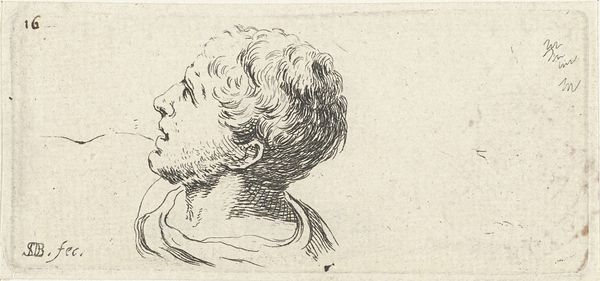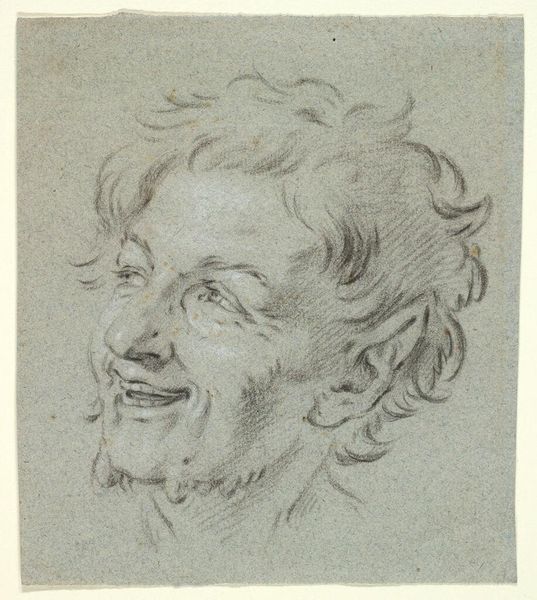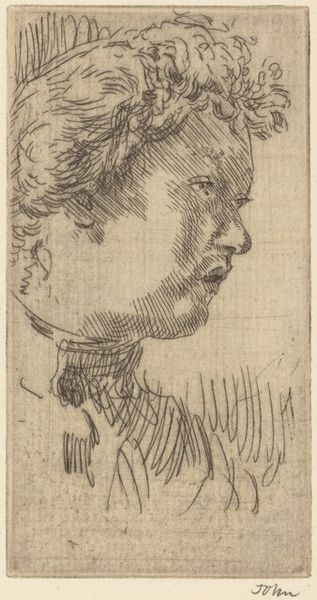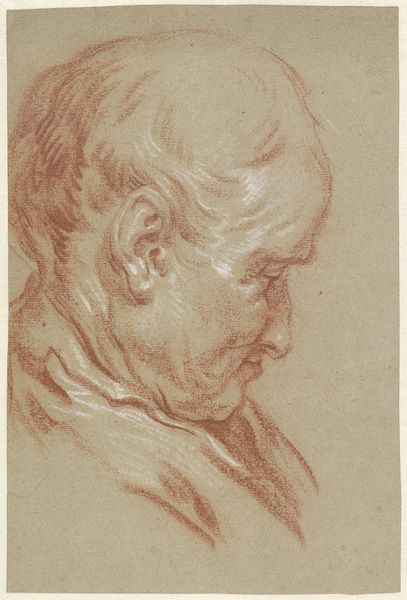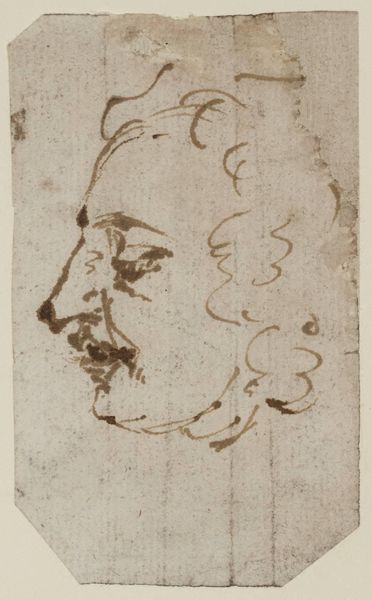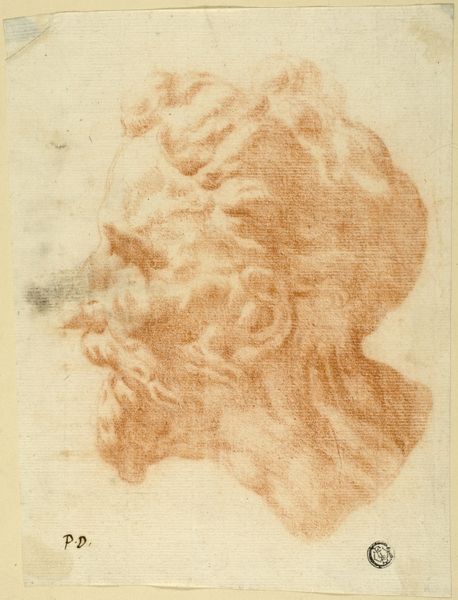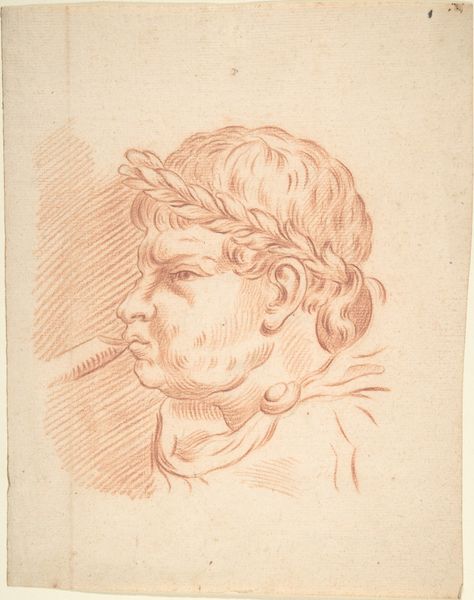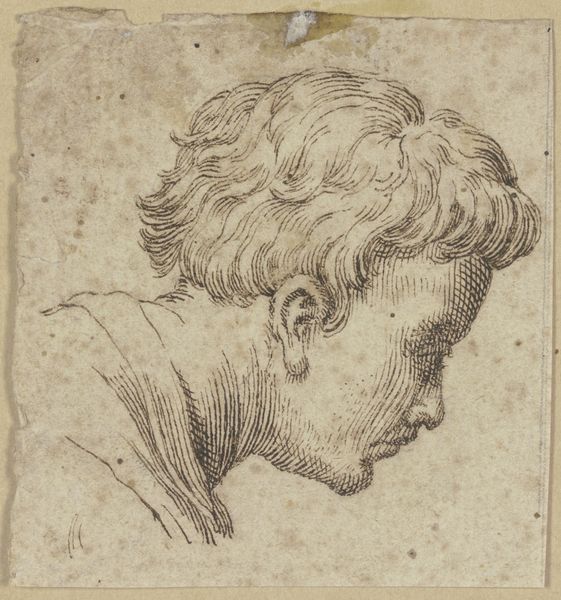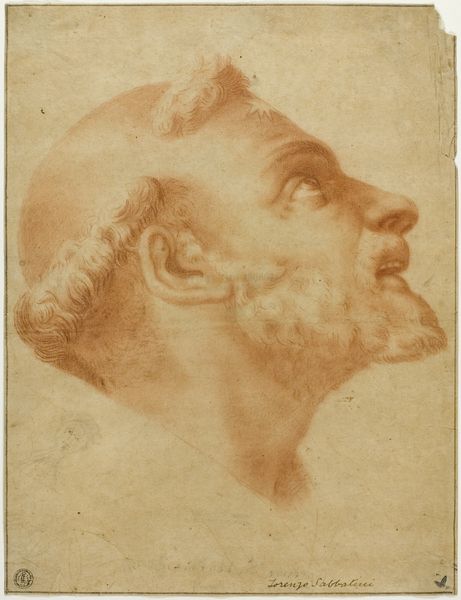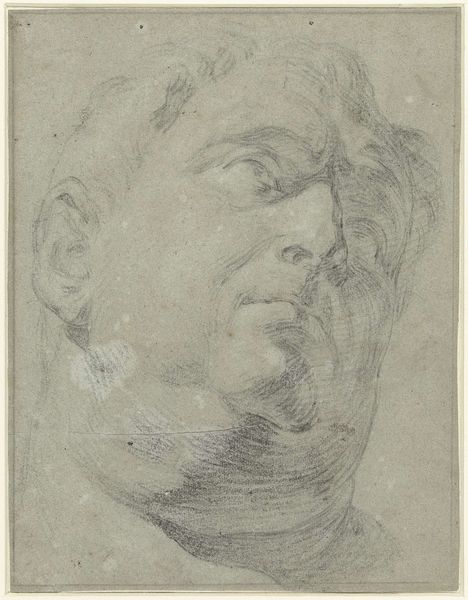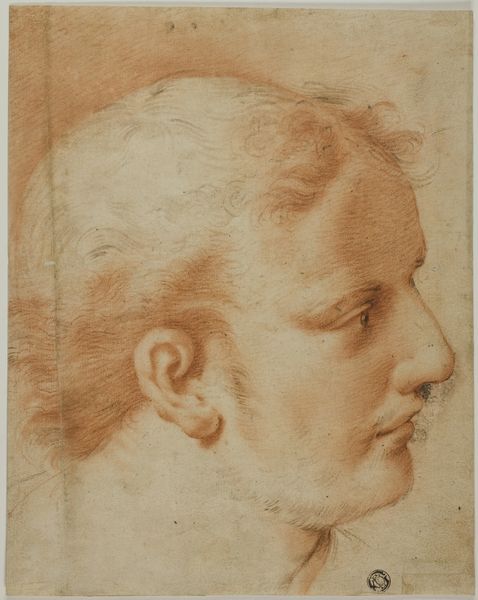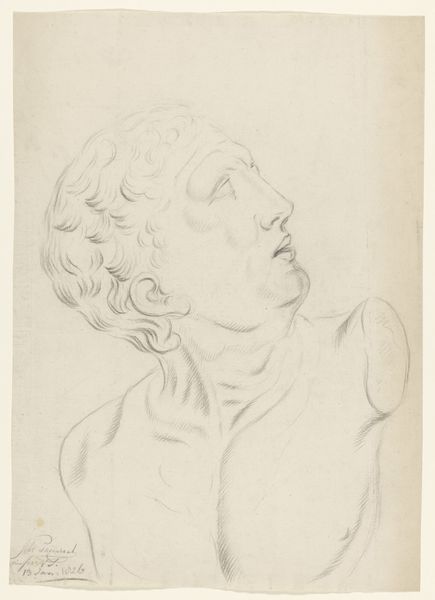
drawing, pencil
#
portrait
#
drawing
#
pencil sketch
#
pencil drawing
#
pencil
#
portrait drawing
#
pencil work
#
realism
Dimensions: height 124 mm, width 88 mm
Copyright: Rijks Museum: Open Domain
Curator: Welcome. We're standing before "Head of a Woman," a drawing currently held here at the Rijksmuseum, though its precise dating has been a topic of some debate, placing it anywhere between 1739 and 1851. It's rendered in pencil by an artist named Johannes Janson. Editor: It has a kind of unfinished energy to it. The upward gaze feels confrontational, yet the overall tone of the light brown pencil on this creamy background gives off a softness. Almost a vulnerability, despite what seems like a somewhat pugnacious jaw. Curator: The sketch quality certainly invites speculation on the subject’s place within the prevailing social structures. How Janson frames and depicts women in his artistic sphere could certainly unveil aspects of gender dynamics in art during his time. Editor: Right, because portraits weren't simply about likeness; they were about power and representation. And here we have this head looking skyward, almost defiant. I can't help but wonder what this person was fighting for or against? The texture almost resembles charcoal work because of the layers, don't you agree? What kind of sociopolitical climate do you envision when assessing this drawing? Curator: Absolutely. Consider that artistic representations, portraits in particular, played a key role in upholding social hierarchies. The upward angle can evoke heroism and inspiration, but its "sketchiness" could represent the precarious positioning of women, even elite women. Editor: I’m really compelled by that unfinished nature; does it suggest the story isn't over? Looking at this today, at the various issues of representation we tackle in contemporary life, I'd argue that its lack of fine detailing could offer audiences a blank canvas on which they can draw their own narratives regarding gender, power, and potential in present day life. Curator: Yes, and the drawing style mirrors a shift within academic art—more of an emphasis on naturalism. Overall, this piece captures this cultural movement but also how images operate in this movement. What will always stand out is its position here in the museum's larger, older art collections, so its interpretation today is vastly different to how it might have been initially reviewed. Editor: Absolutely! What an illuminating study. It's a beautiful conversation starter, really, bridging the art history with the urgency of current conversations on representation and identity.
Comments
No comments
Be the first to comment and join the conversation on the ultimate creative platform.
